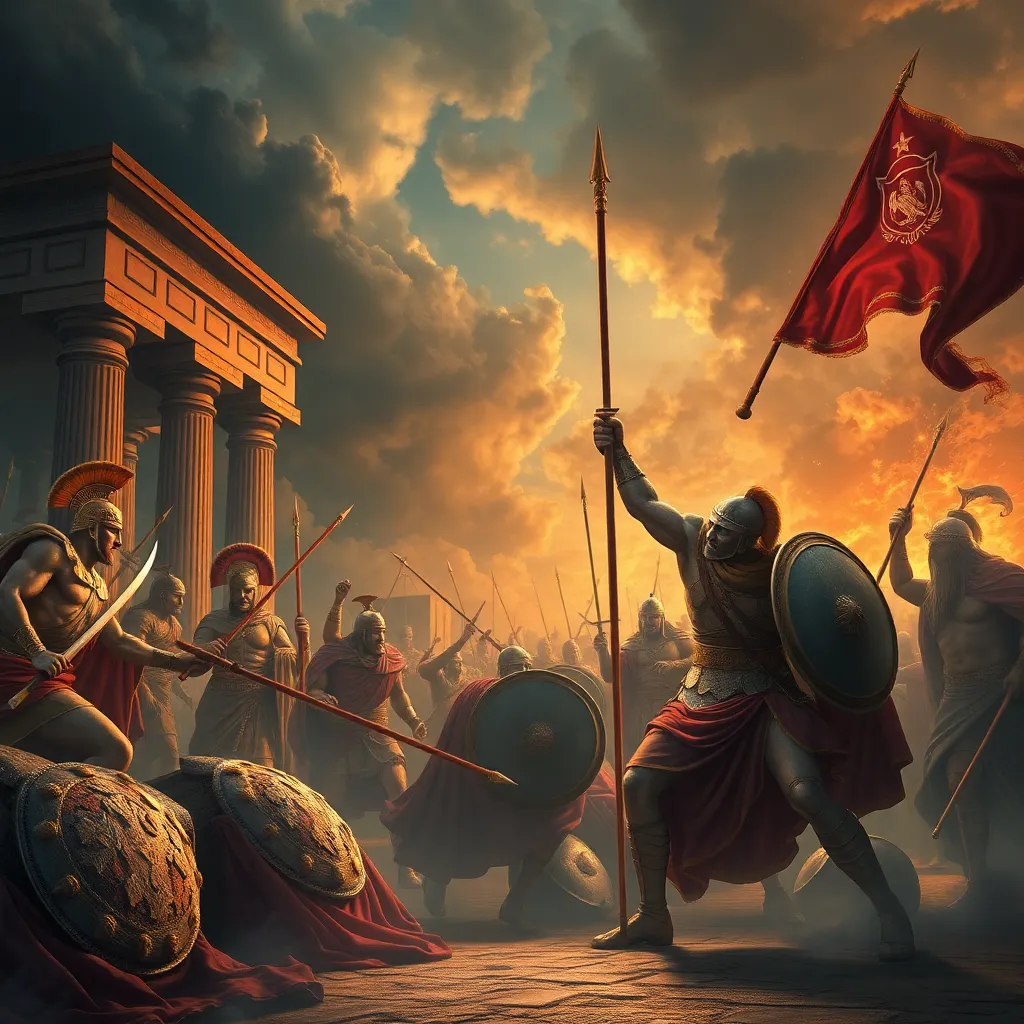Ares and the Representation of War in Ancient Art
Introduction to Ares: The God of War
Ares, the Greek god of war, is a complex figure in mythology, often depicted as a fierce and tumultuous deity. Son of Zeus and Hera, Ares embodies the chaotic and violent aspects of warfare, contrasting sharply with Athena, who represents strategic warfare and wisdom. Ares holds a significant place in ancient Greek culture, not only as a symbol of military prowess but also as a representation of the darker sides of human nature.
The theme of war permeates ancient Greek art, where the portrayal of Ares often reflects the societal attitudes toward conflict, valor, and destruction. Artists from various periods utilized Ares as a figure to explore the complexities of war, making him a focal point in the study of ancient art.
Historical Context: War in Ancient Greece
Warfare was an intrinsic part of ancient Greek life. City-states frequently engaged in conflicts, driven by territorial disputes, political power struggles, and cultural rivalries. The impact of war on daily life was profound, shaping social structures, economy, and even religion.
- Military Organization: The rise of the phalanx and hoplite warfare transformed how battles were fought, emphasizing the role of citizen-soldiers.
- Cultural Impact: War influenced literature, philosophy, and art, leading to a rich tapestry of cultural expression centered around martial themes.
- Religious Significance: Warfare was often viewed as divinely sanctioned, with gods like Ares playing a critical role in the outcomes of battles.
As a result, the perception of war in society influenced artistic representation, with Ares becoming a key figure in conveying both the glory and the horrors of battle.
Ares in Ancient Literature
In classical texts, Ares is portrayed with a duality that reflects the ancient Greeks’ complex relationship with war. In Homer’s “Iliad,” Ares is depicted as a powerful yet often disruptive force, embodying the chaos of battle.
- Ares in Homer: While he is feared and respected, his portrayal also highlights the futility of war.
- Hesiod’s View: In “Theogony,” Ares is associated with strife and violence, reinforcing the notion of his destructive nature.
This literary representation of Ares as both a symbol of destruction and valor influenced artistic interpretations, leading to a rich visual legacy that explored the complexities of warfare.
Visual Representations of Ares in Sculpture
Ancient sculptures of Ares often highlight his martial attributes, showcasing him in various poses that signify strength and aggression. One of the most notable examples is the Ares Borghese, a Roman marble statue that captures the essence of the god.
- Materials and Techniques: Sculptors used materials like marble and bronze, employing techniques that emphasized realism and dynamic poses.
- Symbolism: The posture of Ares, whether standing confidently with weapons or in a more contemplative stance, conveys messages about the nature of war.
These sculptures served not only as artistic expressions but also as reflections of societal values regarding war and heroism.
Ares in Ancient Pottery and Vase Painting
Pottery was a significant medium for depicting Ares and war scenes, with styles such as black-figure and red-figure vase painting offering various interpretations. These artworks showcased Ares in diverse contexts, from battle scenes to mythological narratives.
- Black-Figure Technique: This style features bold outlines and intricate details, often portraying Ares alongside other gods and heroes.
- Red-Figure Technique: A revolutionary development, allowing for greater detail and a more dynamic representation of Ares in action.
The iconography associated with Ares often includes symbols like the spear, helmet, and shield, reinforcing his identity as the god of war. These depictions also served a narrative role, illustrating themes of heroism and the consequences of conflict.
The Role of Ares in Mosaics and Frescoes
Ares also found his place in ancient mosaics and frescoes, where he was depicted in various contexts, from public buildings to private villas. These artworks often conveyed the cultural significance of war and the divine influence on human affairs.
- Contextual Significance: Mosaics featuring Ares were often placed in spaces where social gatherings occurred, reflecting the communal aspects of warfare.
- Evolution of Representation: Over time, Ares’ portrayal evolved, with later depictions emphasizing his heroic qualities alongside his martial nature.
This evolution in artistic representation highlights changing attitudes toward war and the gods associated with it.
Cultural Interpretations of War through Ares
The depictions of Ares in ancient art reflect the complexities of societal attitudes towards war. While some representations glorify Ares as a heroic figure, others critique the violence and destruction he embodies.
- Glorification of War: Many artworks celebrate the valor and honor associated with warfare, portraying Ares as a figure of strength.
- Critical Perspectives: Conversely, some representations highlight the brutal realities of battle, questioning the glorification of conflict.
This duality in the portrayal of Ares has influenced later artistic movements, prompting discussions about the nature of war and its representation in art.
Conclusion: The Enduring Legacy of Ares in Art
The exploration of Ares and his representation in ancient art provides valuable insights into the Greek perception of war. From literature to sculpture and pottery, Ares serves as a focal point for understanding the complexities of conflict and its societal implications.
As we reflect on the lasting impact of these representations, it becomes evident that the themes of war and its portrayal continue to resonate in contemporary discussions. Ares remains a relevant figure in understanding the dual nature of conflict—both as a source of heroism and destruction—making him an enduring symbol in the discourse of war and art.




